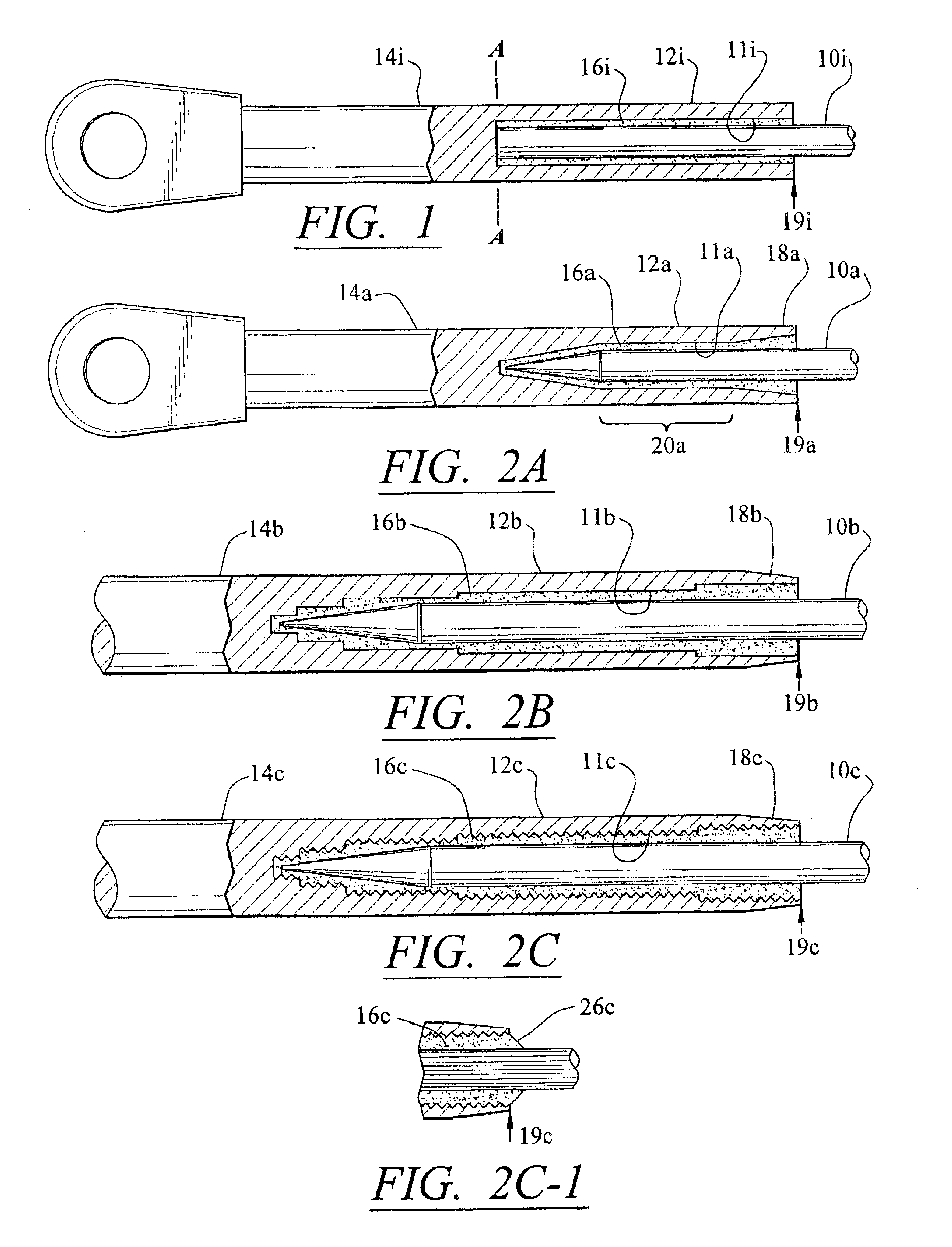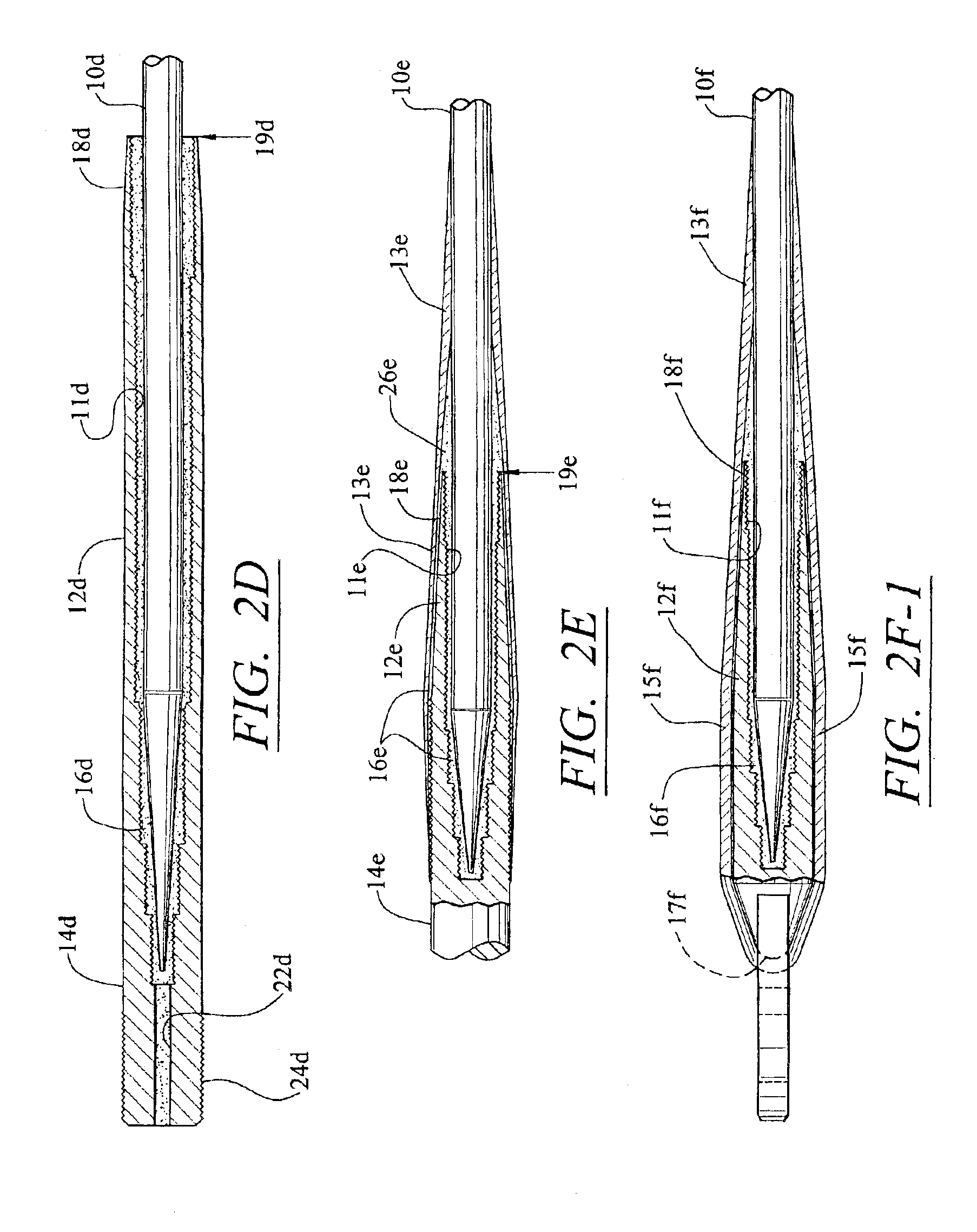Composite tension rod terminal systems
a technology of tension rod terminal system and composite fiber, which is applied in the direction of marine propulsion, special-purpose vessels, vessel construction, etc., can solve the problems of unable to provide a terminal system that is commercially successful, the potential advantages of composite tension rods are largely defeated, and the use of composite tension rods has languished, so as to achieve the effect of superior combination of strength and lightness
- Summary
- Abstract
- Description
- Claims
- Application Information
AI Technical Summary
Benefits of technology
Problems solved by technology
Method used
Image
Examples
Embodiment Construction
[0029]In order to best describe the terminal systems of the invention, it is convenient to first describe an imaginary or hypothetical terminal system. Imagine a terminal system at one end of a composite tension rod as seen in FIG. 1. The tension rod, labeled 10i in the drawing, is of conventional round (circular) cross-section, and is received in the bore 11i of a sleeve 12i. The sleeve is formed as part of the shank 14i of a terminal fitting, in this case an eye. The eye may have a threaded bore (not shown) in which exterior threading (not shown) on the shank is received, the eye being turned down tightly on the shank to form a fitting, in this case the eye. The shank could join to parts other than an eye to form other common types of fittings, such as forks, stud terminals, or swivel bails, or join to tees, cross-pins or barrels that form part of toggle connections, or the shank could be somewhat elongated and threaded for a required adjusting distance to function as part of a tu...
PUM
| Property | Measurement | Unit |
|---|---|---|
| diameter | aaaaa | aaaaa |
| lengths | aaaaa | aaaaa |
| lengths | aaaaa | aaaaa |
Abstract
Description
Claims
Application Information
 Login to View More
Login to View More - R&D
- Intellectual Property
- Life Sciences
- Materials
- Tech Scout
- Unparalleled Data Quality
- Higher Quality Content
- 60% Fewer Hallucinations
Browse by: Latest US Patents, China's latest patents, Technical Efficacy Thesaurus, Application Domain, Technology Topic, Popular Technical Reports.
© 2025 PatSnap. All rights reserved.Legal|Privacy policy|Modern Slavery Act Transparency Statement|Sitemap|About US| Contact US: help@patsnap.com



